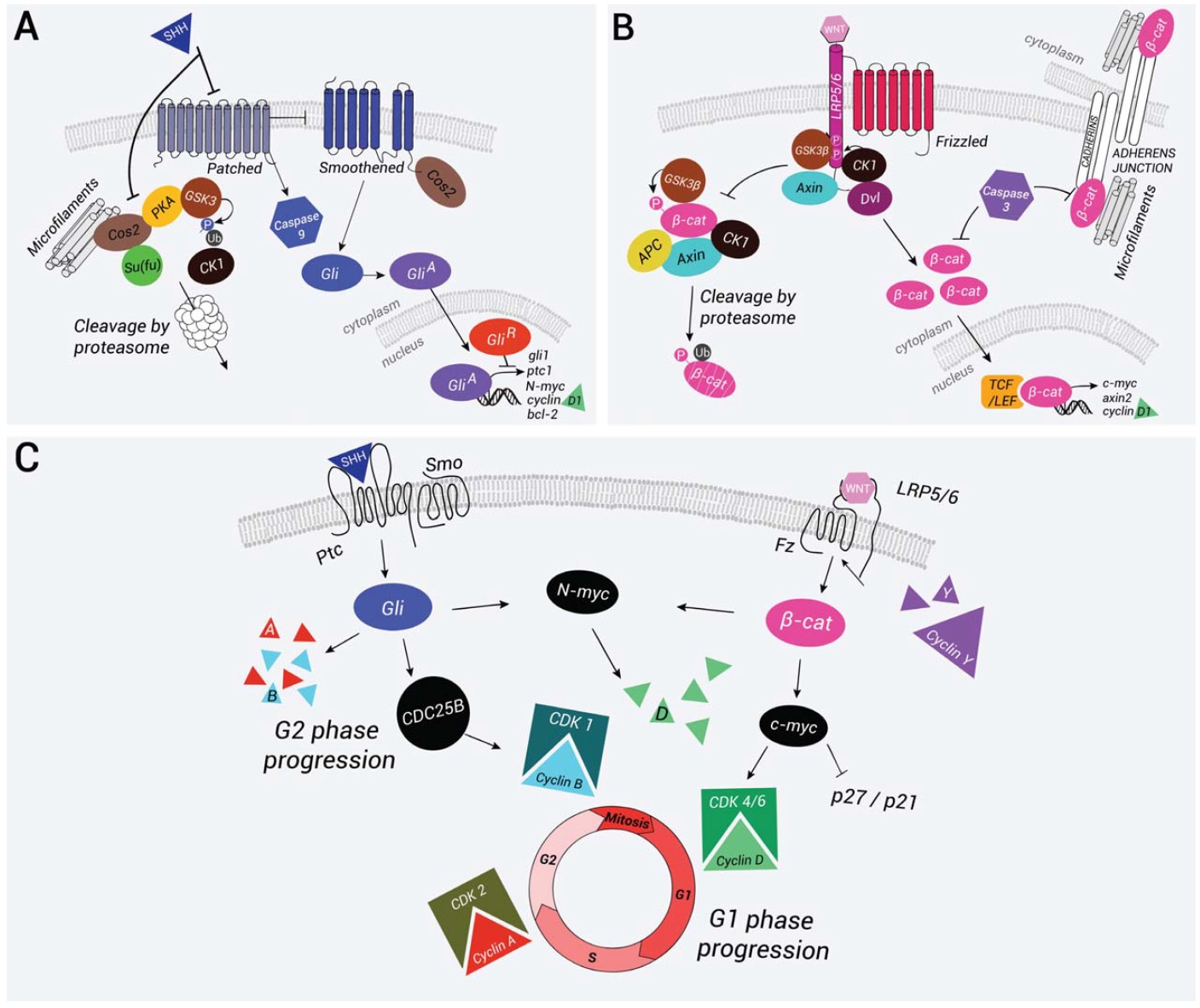XB-IMG-138137
Xenbase Image ID: 138137

|
FIG. 4. The Wnt canonical and the Shh pathways and their interactions. (a) Schematic representation of the Shh pathway. In the absence
of Shh, patched (Ptc) inhibits smoothened (Smo) and prevents its translocation to the cell surface. Cos2 binding to the microtubules allows
the formation of a protein complex with recruitment of GSK3, CK1a, PKA, and Su(Fu). The protein complex phosphorylates the Gli proteins
and targets their proteosomal degradation. Truncated Gli forms translocate to the nucleus where they repress target gene expression. In
parallel, patched can recruit and activate caspase-9 a process that leads to cell death. Binding of Shh to Ptc initiates the pathway, alleviates
repression of Smo, which is translocated to the membrane, and promotes cell survival. Cos2 binds to Smo and inhibits the phosphorylation
of Gli proteins by releasing the different kinases. Full activation of the pathway is achieved by phosphorylation of the cytosolic C-tail of Smo
by PKA and CK1. Full-length forms of Gli are translocated to the nucleus where they induce the expression of Shh target genes such as Gli-
1, Ptc, N-Myc, Bcl-2, and cyclin D1. (b) The schematic representation of the Wnt canonical pathway. In the absence of a Wnt signal, bcatenin
is phosphorylated and targeted for proteasome-mediated degradation by a protein complex containing GSK3-b, CK1a, APC, and
Axin. After binding of the Wnt ligand to the receptors Frizzled (Fz) and LRP5/6, dishevelled (Dvl) binds to Fz and recruits the destruction
complex at the cytosolic tail of LRP5/6. LRP5/6 tail is then phosphorylated by GSK3-b and bound by Axin. In this context, b-catenin is stabilized
and translocated to the nucleus where in association with TCF/LEF transcription factors it stimulates expression of the target genes
c-myc, axin2, and cyclin D1. In parallel, b-catenin is present at the adherens junctions where it associates with cadherins and with the cytoskeleton,
allowing adhesion between neighboring cells. Caspases, and specifically caspase-3, can destabilize the adherens junctions in
part by inhibiting b-catenin association with E-cadherin. At note in vitro b-catenin is a substrate for caspases. (c) Crosstalk between the
Wnt and the Shh pathways promotes cell-cycle progression. The Shh pathway mostly acts on the G2 and S phases through the regulation
of phosphatase CDC25B expression. N-Myc is capable of regulating cyclin D1 expression, which allows progression through G1. In some
cases, Shh also regulates the expression of late cyclins A and B. The Wnt canonical pathway also promotes G1 progression by inducing
the expression of c-myc, which regulates cyclin D1 expression and inhibits p27/Kip1 and p21/Cip1. A feedback loop is regulated by cyclins
Y, which phosphorylate the cytosolic tail of LRP5/6 to activate the Wnt pathway. Image published in: Juraver-Geslin HA and Durand BC (2015) Copyright © 2015. Image reproduced with permission of the Publisher, John Wiley & Sons. Larger Image Printer Friendly View |
